Key Takeaways
- Catering software automates order management, menu planning, and event scheduling, improving efficiency and reducing manual workload.
- It enhances customer experience with real-time updates, digital invoicing, and seamless communication between clients and catering teams.
- Advanced features like AI-powered analytics, cloud-based access, and inventory tracking help businesses cut costs and optimize operations.
In today’s fast-paced and highly competitive food service industry, catering businesses must embrace digital transformation to streamline operations, enhance efficiency, and improve customer satisfaction.
One of the most significant technological advancements in this sector is catering software—a powerful tool designed to automate and optimize various aspects of catering management.
From handling event bookings and menu planning to managing inventory and staff scheduling, catering software has become an essential solution for catering companies of all sizes.
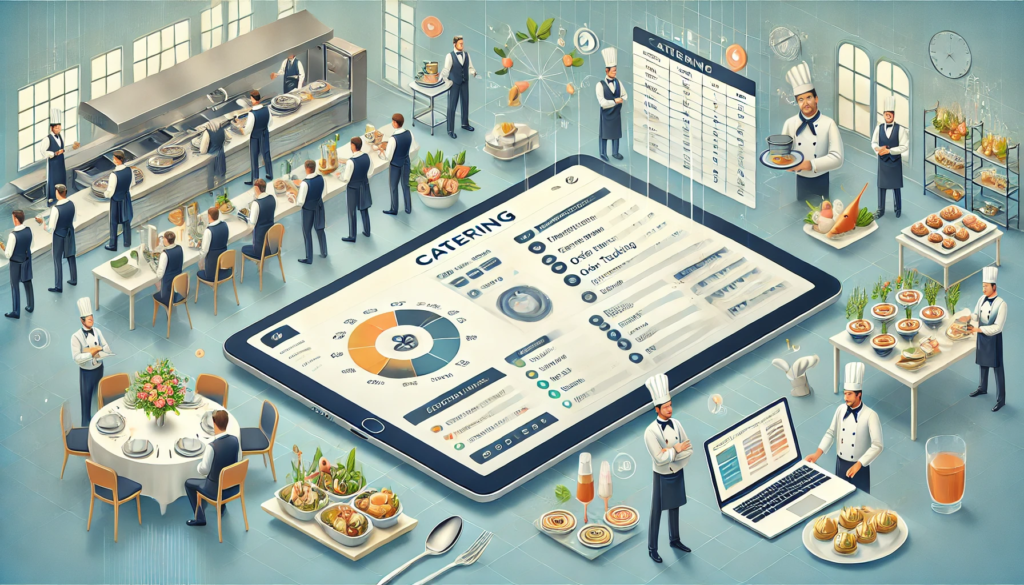
Traditionally, catering businesses relied on manual processes, spreadsheets, and phone calls to coordinate orders, track inventory, and manage customer relationships.
However, these outdated methods often led to inefficiencies, miscommunication, and errors that could impact the overall customer experience.
The emergence of catering software has transformed the way catering businesses operate, allowing them to increase productivity, reduce costs, and provide a seamless experience for clients.
By integrating advanced automation, real-time tracking, and data-driven insights, catering software enables caterers to optimize their workflows, improve accuracy, and scale their business operations with ease.
Why Catering Businesses Need Software Solutions
As consumer expectations continue to rise, catering companies must adapt to evolving demands by offering personalized services, fast order processing, and error-free execution.
Whether managing small private events or large-scale corporate functions, catering businesses must ensure that every aspect of their operations runs smoothly—from food preparation to delivery and customer communication.
This is where catering software plays a crucial role, automating time-consuming tasks and allowing catering professionals to focus on delivering high-quality service.
Moreover, the integration of digital solutions has become a necessity rather than a luxury in the modern catering landscape.
With the growing demand for online ordering, real-time event coordination, and seamless payment processing, catering businesses that fail to adopt advanced software solutions risk falling behind their competitors.
By leveraging catering software, companies can enhance operational efficiency, minimize food wastage, and ensure a seamless client experience, ultimately leading to higher customer satisfaction and increased revenue.
Key Features That Make Catering Software Essential
Catering software is designed to handle multiple functions that simplify the complexities of catering management.
Some of the key features that make this technology indispensable include:
- Online Order and Booking Management: Customers can place catering orders and schedule events effortlessly through an intuitive online platform.
- Menu Planning and Customization: Catering professionals can create custom menus based on client preferences, dietary restrictions, and event themes.
- Inventory and Supplier Management: Real-time tracking of stock levels ensures that ingredients are available when needed, reducing waste and preventing last-minute shortages.
- Staff Scheduling and Task Coordination: Catering software allows businesses to assign roles, track employee availability, and manage event execution efficiently.
- Customer Relationship Management (CRM): Built-in CRM features help caterers maintain strong client relationships, manage preferences, and offer personalized services.
- Billing and Payment Processing: Automated invoicing and multiple payment options simplify transactions, ensuring a smooth financial workflow.
The Growing Adoption of Catering Software in the Industry
As digital transformation continues to reshape the food and hospitality industry, catering businesses are rapidly adopting cloud-based catering software to enhance their operations.
The demand for mobile-friendly solutions, AI-driven automation, and real-time analytics has led to the development of highly sophisticated catering software that enables businesses to manage multiple events, track key performance metrics, and optimize overall efficiency.
Furthermore, with the rise of virtual catering services, hybrid event planning, and on-demand food delivery, catering software is no longer a luxury but a necessity for businesses looking to stay competitive.
Whether catering for weddings, corporate events, or large-scale banquets, companies that implement cutting-edge catering software gain a significant advantage in managing logistics, ensuring accuracy, and delivering exceptional customer experiences.
In a rapidly evolving industry where efficiency, accuracy, and customer satisfaction are paramount, catering software has become an indispensable tool for modern catering businesses.
By automating key processes such as order management, inventory tracking, staff coordination, and customer communication, catering software empowers businesses to operate more efficiently and scale their services with confidence.
As the demand for seamless and technology-driven catering solutions continues to grow, investing in the right catering software can be the key to long-term success and sustainability in the competitive catering industry.
Before we venture further into this article, we would like to share who we are and what we do.
About 9cv9
9cv9 is a business tech startup based in Singapore and Asia, with a strong presence all over the world.
With over nine years of startup and business experience, and being highly involved in connecting with thousands of companies and startups, the 9cv9 team has listed some important learning points in this overview of What is Catering Software and How It Works.
If your company needs recruitment and headhunting services to hire top-quality employees, you can use 9cv9 headhunting and recruitment services to hire top talents and candidates. Find out more here, or send over an email to [email protected].
Or just post 1 free job posting here at 9cv9 Hiring Portal in under 10 minutes.
What is Catering Software and How It Works
- Understanding Catering Software
- How Catering Software Works
- Benefits of Using Catering Software
- Choosing the Right Catering Software for Your Business
- Future Trends in Catering Software
1. Understanding Catering Software
Catering software is a specialized digital solution designed to help catering businesses manage their operations more efficiently. From handling bookings and orders to tracking inventory, scheduling staff, and automating payments, catering software streamlines the entire workflow, reducing manual effort and minimizing errors.
Modern catering businesses face numerous challenges, including complex event management, fluctuating inventory needs, and demanding customer expectations. Catering software provides an all-in-one platform that integrates multiple functions, enabling caterers to enhance productivity, improve customer experience, and increase profitability.
Below is a detailed breakdown of what catering software is, its core features, and how it differs from other restaurant or event management systems.
What is Catering Software?
Catering software is a comprehensive management tool designed for catering businesses, event planners, and food service providers. It offers various features that allow businesses to:
- Automate catering orders, from customer inquiries to final delivery.
- Manage large-scale events efficiently, ensuring smooth execution.
- Customize menus based on client preferences, dietary needs, and budget constraints.
- Monitor inventory levels to prevent shortages or food waste.
- Schedule staff effectively to ensure optimal resource allocation.
- Improve customer relationship management (CRM) with personalized communication and service tracking.
Key Differences Between Catering Software and Restaurant Management Software
Many people confuse catering software with restaurant management software, but they serve different purposes:
- Catering software is designed for off-site, event-based food service, while restaurant management software focuses on in-house dining.
- Catering software handles large, one-time or recurring orders, unlike restaurant systems that process single-meal transactions.
- Event scheduling and logistics management are built into catering software but are typically not included in restaurant POS (Point of Sale) systems.
- Menu customization and client-based pricing are essential in catering software, whereas restaurant software follows fixed pricing and menu structures.
Core Features of Catering Software
To fully understand catering software, it is important to explore its core functionalities. Below are the key features that make catering software indispensable for modern catering businesses.
1. Online Order and Booking Management
Catering software simplifies the order-taking process and eliminates the need for manual order tracking.
- Online order forms and customer portals allow clients to place catering orders easily.
- Automated confirmations and reminders ensure clear communication between the business and customers.
- Integration with event planning tools helps caterers sync orders with specific dates and venues.
- Example: A corporate catering company using CaterZen automates its booking process, allowing clients to schedule office lunches weeks in advance.
2. Menu Planning and Customization
Catering menus often differ from standard restaurant menus, requiring more flexibility in customization.
- Clients can choose from pre-set menus or create customized options based on event needs.
- Nutritional and dietary restriction tracking ensures compliance with customer preferences.
- Dynamic pricing features allow caterers to adjust costs based on ingredients, portion sizes, and event scale.
- Example: A wedding catering service using Total Party Planner offers a dynamic menu builder that adjusts pricing based on seasonal ingredient availability.
3. Inventory and Supplier Management
Managing food supplies is critical for catering businesses to prevent shortages and excess waste.
- Automated inventory tracking ensures that ingredient levels are maintained.
- Low-stock alerts and purchase order automation help businesses avoid last-minute supply issues.
- Supplier management tools allow seamless reordering from preferred vendors.
- Example: A large-scale banquet caterer using FoodStorm Catering Software integrates supplier inventory data to predict future stock needs based on event schedules.
4. Staff Scheduling and Task Management
Catering events require proper workforce coordination to ensure smooth execution.
- Employee scheduling tools help assign staff to events based on availability and expertise.
- Automated task delegation ensures that everyone knows their responsibilities before an event.
- Payroll and timesheet tracking integrate with accounting software for seamless payroll processing.
- Example: A catering company using Flex Catering optimizes staffing by automatically assigning chefs, servers, and logistics teams to different events.
5. Customer Relationship Management (CRM)
Strong client relationships are crucial for catering businesses that depend on repeat customers and referrals.
- Centralized customer database tracks previous orders, preferences, and feedback.
- Automated follow-ups and promotions encourage repeat business.
- Event history tracking allows caterers to provide a personalized experience for returning clients.
- Example: A corporate catering firm using CaterTrax sends automated thank-you emails and discount offers to repeat customers.
6. Billing, Invoicing, and Payment Processing
Managing payments efficiently ensures a smooth cash flow and eliminates manual invoicing errors.
- Automated invoice generation reduces the risk of miscalculations.
- Multiple payment options (credit cards, digital wallets, bank transfers) enhance customer convenience.
- Integration with accounting software (such as QuickBooks or Xero) simplifies financial tracking.
- Example: A catering business using Curate provides clients with digital invoices and secure online payment links, speeding up transaction processing.
7. Integration with Other Business Tools
Seamless integration with other business systems enhances efficiency.
- POS system compatibility ensures accurate order tracking and financial reporting.
- Event planning software integration helps sync catering services with venue schedules.
- Marketing and email automation tools enable caterers to send promotional offers.
- Example: A high-end catering service using Caterease integrates with event planning tools like Cvent to coordinate logistics and guest management.
The Growing Importance of Catering Software in the Industry
The catering industry is evolving rapidly, with increasing demand for digital solutions to streamline operations and improve service delivery. Several factors are driving the growing adoption of catering software:
- Rise of Online Ordering: Customers expect digital platforms where they can conveniently book catering services.
- Increased Competition: Catering businesses must optimize their operations to remain competitive.
- Labor Shortages: Automation helps reduce dependency on large staff teams.
- Customer Expectations: Clients demand faster response times, customized services, and digital payment options.
- Sustainability and Cost Efficiency: Smart inventory management reduces food waste and operational costs.
Conclusion
Understanding catering software is essential for catering businesses looking to scale their operations, improve efficiency, and provide a seamless customer experience. By leveraging key features such as automated booking management, real-time inventory tracking, staff scheduling, and integrated payment processing, catering businesses can enhance their workflow and stay ahead in a competitive industry.
With the increasing demand for digital-first solutions and data-driven decision-making, catering software is no longer just a luxury—it is a necessity for modern catering businesses aiming to achieve operational excellence.
2. How Catering Software Works
Catering software operates as an end-to-end digital solution that streamlines every aspect of a catering business, from customer inquiries and menu selection to event execution and payment processing. By automating and integrating essential functions, catering software enhances efficiency, minimizes errors, and improves customer satisfaction.
Below is a detailed breakdown of how catering software works, covering each major function step-by-step, with real-world examples to illustrate its impact.
1. Online Inquiry and Booking Management
Catering software simplifies customer interactions by offering an online platform where potential clients can browse services, submit inquiries, and confirm bookings.
- Online inquiry forms allow customers to request quotes and availability.
- Automated responses provide quick replies with pricing, package details, and available dates.
- Customizable booking portals enable customers to select services, specify guest counts, and finalize their event requirements.
- Integrated calendars prevent double bookings and streamline scheduling.
- Example: A corporate catering company using CaterZen automates its inquiry process, allowing businesses to book lunch deliveries with pre-set menu options and delivery time slots.
2. Menu Planning and Customization
Catering software enables businesses to create, adjust, and optimize menus based on client preferences, dietary needs, and event requirements.
- Pre-set menus and à la carte options allow customers to choose from standard packages or customize meals.
- Ingredient tracking ensures that food selections align with available inventory.
- Dietary preference filters help businesses accommodate allergies, vegetarian, vegan, or gluten-free needs.
- Dynamic pricing tools adjust costs based on portion sizes, ingredients, and event scale.
- Example: A wedding catering service using Total Party Planner offers an interactive menu builder where clients can customize meal plans based on their budget and guest count.
3. Order Management and Workflow Automation
Once a customer places an order, catering software automates the entire workflow to ensure seamless execution.
- Order tracking dashboards allow businesses to monitor incoming, ongoing, and completed orders in real time.
- Automated task assignments distribute responsibilities among kitchen staff, delivery teams, and event managers.
- Real-time notifications alert teams about order updates, cancellations, or modifications.
- Example: A catering company using FoodStorm Catering Software automatically generates kitchen prep lists for chefs based on upcoming event orders.
4. Inventory and Supplier Management
Catering businesses rely on accurate inventory tracking to prevent shortages or waste. Catering software integrates inventory management features to optimize ingredient usage.
- Real-time inventory tracking updates stock levels after each order.
- Low-stock alerts notify managers when ingredients need replenishment.
- Automated purchase orders streamline supplier communication and prevent last-minute shortages.
- Supplier integration tools allow businesses to connect with vendors and negotiate pricing.
- Example: A catering business using Flex Catering links its inventory system to a supplier network, automatically generating purchase orders when stock levels fall below a set threshold.
5. Event Scheduling and Staff Management
Coordinating catering staff is crucial for event success. Catering software simplifies workforce scheduling and event logistics.
- Employee shift scheduling assigns staff based on availability and expertise.
- Task delegation tools allocate responsibilities for cooking, serving, and delivery.
- Payroll tracking and timesheets streamline wage calculations.
- Example: A large banquet service using Curate assigns servers, chefs, and logistics staff automatically based on event size and type.
6. Delivery and Logistics Management
For off-site catering, timely and efficient delivery is essential. Catering software optimizes delivery schedules, routes, and tracking.
- Delivery route optimization minimizes transportation costs and ensures timely food delivery.
- GPS tracking tools allow businesses to monitor drivers in real time.
- Temperature control alerts help maintain food quality during transit.
- Example: A catering company using CaterTrax ensures hot meal deliveries stay warm by integrating GPS tracking with insulated delivery box temperature monitoring.
7. Customer Relationship Management (CRM) and Communication
Catering software enhances customer interactions through personalized communication and relationship-building tools.
- Customer databases store order history, preferences, and past events.
- Automated follow-ups send thank-you emails, surveys, and promotional offers.
- Loyalty programs and discounts encourage repeat business.
- Example: A corporate caterer using Caterease sends automatic reminders to previous clients about upcoming events they might need catering for.
8. Payment Processing and Invoicing
Catering software simplifies billing and payment collection, reducing errors and ensuring faster transactions.
- Automated invoicing generates digital invoices with detailed cost breakdowns.
- Multiple payment options (credit cards, bank transfers, PayPal) improve customer convenience.
- Tax calculations and discounts ensure accurate pricing.
- Example: A catering company using CaterSOFT integrates with QuickBooks for seamless invoice management and financial reporting.
9. Reporting and Data Analytics
Catering software provides detailed business insights to help caterers optimize their operations and improve profitability.
- Sales reports and revenue tracking help businesses monitor financial performance.
- Customer trends analysis identifies popular menu items and peak booking seasons.
- Cost breakdowns reveal areas for budget optimization.
- Example: A catering service using Catering CRM analyzes customer trends to adjust pricing strategies and introduce seasonal menu items.
10. Integration with Other Business Tools
To maximize efficiency, catering software integrates with other essential business applications, such as:
- POS systems for seamless order processing.
- Event planning software for syncing with venue schedules.
- Marketing automation tools for customer outreach and email campaigns.
- Example: A high-end catering company using Caterease links its catering platform with Cvent to align catering logistics with event management schedules.
Conclusion
Catering software works by automating, optimizing, and integrating essential business operations, from customer inquiries and menu planning to event execution and payment processing. By leveraging advanced features such as inventory tracking, staff scheduling, CRM, and analytics, catering businesses can enhance efficiency, reduce costs, and improve customer satisfaction.
As the demand for seamless and technology-driven catering solutions grows, investing in the right catering software becomes an essential step for businesses looking to scale and stay competitive in the modern food service industry.
3. Benefits of Using Catering Software
Catering software offers a comprehensive solution for catering businesses by streamlining operations, improving efficiency, and enhancing customer experiences. From automating order management to optimizing delivery logistics, catering software provides numerous advantages that boost productivity, reduce costs, and increase profitability.
Below is a detailed breakdown of the key benefits of using catering software, highlighting real-world exampleswhere applicable.
1. Enhanced Efficiency and Workflow Automation
Catering software eliminates manual processes, allowing businesses to automate tasks and improve operational efficiency.
- Order automation: Reduces the need for manual order entry, ensuring seamless processing.
- Task scheduling and delegation: Assigns responsibilities to kitchen staff, delivery teams, and event coordinators.
- Real-time updates: Keeps all teams informed about changes in orders, schedules, and deliveries.
- Example: A catering company using CaterZen automates order tracking, reducing miscommunications and improving order accuracy.
2. Improved Order Accuracy and Reduced Errors
Manual order processing often leads to mistakes in meal preparation, delivery, or billing. Catering software minimizes human errors through automated workflows.
- Digital order management: Ensures accurate entry of customer preferences, dietary restrictions, and portion sizes.
- Real-time modifications: Allows instant updates to orders without confusion.
- Automated invoicing: Reduces billing discrepancies and ensures accurate pricing.
- Example: A wedding catering business using Total Party Planner ensures accurate meal selections, avoiding mix-ups with guests’ dietary restrictions.
3. Streamlined Menu Customization and Pricing
Catering businesses often provide customized menus for different events, requiring flexibility in pricing and meal options. Catering software simplifies this process.
- Dynamic pricing tools: Adjust prices based on ingredients, guest count, and portion sizes.
- Pre-set and custom menus: Offer standard meal plans while allowing modifications for specific requests.
- Dietary preference management: Ensures smooth handling of vegetarian, vegan, and allergy-friendly meal options.
- Example: A corporate catering company using Flex Catering allows businesses to create custom meal packages while maintaining cost efficiency.
4. Efficient Inventory and Supplier Management
Managing inventory manually can lead to overstocking, shortages, and food waste. Catering software ensures optimized inventory tracking and supplier coordination.
- Real-time stock monitoring: Prevents running out of essential ingredients.
- Automated purchase orders: Sends restock requests to suppliers when inventory runs low.
- Waste reduction: Tracks ingredient usage and prevents over-purchasing.
- Example: A catering business using FoodStorm Catering Software links its inventory system with suppliers, ensuring automated restocking of perishable goods.
5. Better Event and Staff Management
Catering software helps businesses efficiently schedule events and manage staff, ensuring smooth operations during high-demand periods.
- Event scheduling tools: Prevent conflicts and double bookings.
- Automated staff scheduling: Assigns employees based on availability and skills.
- Payroll and shift tracking: Keeps track of working hours and wage calculations.
- Example: A banquet hall using Curate schedules chefs, servers, and delivery teams automatically based on event size.
6. Faster and More Reliable Delivery Management
Catering businesses that offer off-site services need efficient delivery management to ensure food arrives fresh and on time.
- Route optimization tools: Select the best delivery routes to minimize delays.
- GPS tracking: Allows real-time monitoring of delivery vehicles.
- Temperature control monitoring: Ensures hot and cold foods maintain proper temperatures.
- Example: A catering company using CaterTrax integrates GPS tracking to provide customers with live delivery updates.
7. Enhanced Customer Experience and Engagement
Customer satisfaction is crucial in the catering industry. Catering software improves customer interactions and builds long-term relationships.
- Personalized customer portals: Allow clients to track orders, customize menus, and make payments easily.
- Automated follow-ups: Sends thank-you emails, event reminders, and promotional offers.
- Loyalty programs: Encourages repeat business with discounts and special offers.
- Example: A high-end catering business using Caterease sends personalized event suggestions to past customers based on previous orders.
8. Seamless Payment Processing and Invoicing
Billing and payments are critical components of catering services. Catering software simplifies invoicing and ensures secure transactions.
- Multiple payment options: Accepts credit cards, bank transfers, and digital wallets.
- Automated invoice generation: Reduces errors in billing calculations.
- Tax and discount application: Ensures accurate pricing based on local regulations.
- Example: A catering company using CaterSOFT integrates its payment system with QuickBooks, reducing administrative workload.
9. Data-Driven Decision Making and Reporting
Catering software provides valuable insights that help businesses optimize their operations and increase profitability.
- Sales and revenue reports: Track income trends and identify profitable services.
- Customer behavior analytics: Understand preferences and demand patterns.
- Operational cost tracking: Identify areas for budget optimization.
- Example: A catering business using Catering CRM identifies peak booking seasons and adjusts marketing strategies accordingly.
10. Integration with Other Business Tools
Catering software often integrates with other essential business applications, improving overall efficiency and coordination.
- POS system integration: Ensures smooth payment processing and order tracking.
- Event management software sync: Helps with venue coordination and scheduling.
- Marketing automation tools: Enhance customer outreach through social media and email campaigns.
- Example: A catering business using Caterease links with Cvent to align catering schedules with event planning.
Conclusion
Using catering software transforms how catering businesses operate, providing greater efficiency, cost savings, and enhanced customer service. From automated order management and inventory tracking to optimized event scheduling and real-time reporting, catering software reduces operational challenges and maximizes profitability.
As the food service industry becomes increasingly competitive, investing in the right catering software is essential for growth and long-term success. Businesses that leverage automation, data analytics, and seamless integrationscan offer higher-quality services, reduce costs, and maintain a competitive edge in the catering market.
4. Choosing the Right Catering Software for Your Business
Selecting the right catering software is a critical decision that can significantly impact a business’s efficiency, profitability, and customer satisfaction. With numerous options available, businesses must carefully evaluate their needs and consider factors such as features, scalability, integrations, and cost.
Below is a detailed guide to help catering businesses choose the most suitable catering software, along with real-world examples where applicable.
1. Assessing Your Business Needs
Before selecting a catering software solution, businesses must evaluate their specific requirements to ensure the software aligns with their operational goals.
- Business size and scale:
- Small catering businesses may need basic order and inventory management, while large-scale caterers require advanced features like CRM and event management tools.
- Example: A local bakery offering catering services may only need order tracking and invoicing, whereas a corporate catering company requires comprehensive event management.
- Type of catering services:
- Full-service event caterers need menu customization, staff scheduling, and delivery tracking.
- Meal delivery services require optimized route planning and automated recurring orders.
- Example: A wedding catering business benefits from event planning integrations, while a corporate meal provider needs bulk order management features.
- Budget considerations:
- Subscription-based models are ideal for startups, while established businesses may prefer one-time license fees.
- Example: A startup catering business might choose CaterZen, which offers affordable monthly plans.
2. Key Features to Look for in Catering Software
When selecting catering software, businesses should look for essential features that streamline operations.
- Order management and automation:
- Allows businesses to track, modify, and confirm orders seamlessly.
- Reduces errors in meal preparation and delivery.
- Example: Total Party Planner enables caterers to manage complex orders with automated notifications.
- Menu customization and pricing tools:
- Supports custom menu creation based on event type, dietary restrictions, and portion sizes.
- Example: Flex Catering allows users to create dynamic menus with real-time pricing adjustments.
- Inventory and supplier management:
- Prevents overstocking and shortages by automating inventory tracking.
- Example: FoodStorm helps catering businesses manage ingredient levels and supplier restocking.
- Event and staff scheduling:
- Ensures smooth staff allocation and event coordination.
- Prevents double-booking and improves workforce efficiency.
- Example: Curate integrates event management with staff scheduling for seamless operations.
- Billing, invoicing, and payment processing:
- Supports multiple payment methods and generates automated invoices.
- Example: CaterTrax integrates with QuickBooks for accurate financial tracking.
- Delivery and logistics management:
- Ensures timely food delivery with route optimization and GPS tracking.
- Example: Caterease offers real-time delivery tracking to enhance customer satisfaction.
- Customer relationship management (CRM):
- Helps manage client preferences, track order history, and send automated follow-ups.
- Example: Catering CRM helps businesses personalize their marketing efforts based on past orders.
- Reporting and analytics:
- Provides insights into sales, expenses, and customer preferences for strategic decision-making.
- Example: CaterSOFT generates detailed business reports to improve financial planning.
3. Cloud-Based vs. On-Premises Catering Software
Businesses need to decide whether a cloud-based or on-premises solution best fits their needs.
- Cloud-based software:
- Accessible from anywhere, offering greater flexibility.
- Requires an internet connection for real-time updates.
- Example: CaterZen is a cloud-based platform allowing remote access for catering businesses.
- On-premises software:
- Installed directly on company servers, providing better security and control.
- Requires higher upfront costs but eliminates ongoing subscription fees.
- Example: Caterease Desktop is a self-hosted catering software ideal for large enterprises.
4. Scalability and Future Growth Potential
Businesses should invest in catering software that can adapt to future expansion and changing industry trends.
- Multi-location support:
- Essential for businesses planning to expand into new markets.
- Example: CaterTrax supports multiple branches, allowing seamless growth management.
- Customization options:
- Look for software that allows tailored workflows, branding, and menu options.
- Example: Flex Catering enables businesses to customize invoices, menus, and reports.
- Third-party integrations:
- Ensures compatibility with accounting, POS, and marketing tools.
- Example: FoodStorm integrates with QuickBooks, Shopify, and Square for smooth operations.
5. User-Friendliness and Customer Support
Catering software should be intuitive and easy to use for staff, with reliable customer support.
- Ease of setup and use:
- Look for a simple interface with minimal learning curves.
- Example: Total Party Planner offers a drag-and-drop interface for easy order management.
- Training and onboarding:
- Some software providers offer training sessions, video tutorials, and user manuals.
- Example: Curate provides comprehensive training resources for new users.
- Customer support availability:
- 24/7 support is beneficial for caterers who work outside standard business hours.
- Example: CaterZen provides live chat, phone, and email support.
6. Cost and Pricing Models
Pricing structures vary depending on the software provider, making it important to compare costs and value for money.
- Subscription-based pricing:
- Suitable for small to mid-sized businesses with a lower initial investment.
- Example: CaterZen offers flexible monthly plans.
- One-time licensing fees:
- Ideal for large catering companies that want full control over their software.
- Example: Caterease provides an on-premises version with a one-time purchase option.
- Freemium or trial versions:
- Allows businesses to test the software before committing.
- Example: FoodStorm offers a free trial for new users.
7. Reviews and Recommendations
Before making a final decision, businesses should research user reviews and seek recommendations from industry professionals.
- Check online reviews:
- Look at platforms like Capterra, G2, and Trustpilot for user feedback.
- Example: Flex Catering has high ratings for its user-friendly interface and integration capabilities.
- Request software demos:
- Many providers offer free demonstrations to showcase their features.
- Example: Total Party Planner provides live demos for prospective customers.
- Join catering business forums:
- Engaging with industry peers can provide insights into the most reliable software options.
- Example: Catering professionals on Reddit and LinkedIn discuss real-world experiences with different platforms.
Conclusion
Choosing the right catering software requires careful evaluation of business needs, key features, budget, scalability, and user experience. Whether a business specializes in weddings, corporate events, or meal deliveries, investing in the right software solution ensures smoother operations, increased profitability, and enhanced customer satisfaction.
By considering factors such as automation capabilities, integration options, customer support, and cost-effectiveness, catering businesses can select a platform that aligns with their growth strategy and provides long-term success in a competitive market.
5. Future Trends in Catering Software
The catering industry is undergoing rapid digital transformation, and catering software is evolving to meet increasing customer demands, efficiency needs, and sustainability goals. Emerging trends in automation, artificial intelligence, cloud computing, and customer engagement are shaping the future of catering management.
Below is a detailed look at the key future trends in catering software, with relevant examples of how they are impacting the industry.
1. Artificial Intelligence (AI) and Machine Learning in Catering Software
AI-powered catering software is revolutionizing order management, menu planning, and customer service by enabling intelligent automation and data-driven decision-making.
- AI-driven order forecasting:
- Uses historical data and customer behavior analysis to predict future orders.
- Reduces food waste by optimizing ingredient purchases.
- Example: FoodStorm integrates AI-based forecasting to help businesses adjust inventory levels based on past orders.
- Personalized customer recommendations:
- AI algorithms analyze customer preferences, dietary habits, and past orders to offer tailored suggestions.
- Enhances customer experience and increases order value.
- Example: CaterZen provides AI-based menu recommendations based on customer history.
- Chatbots and virtual assistants:
- Automate customer inquiries, booking confirmations, and order modifications.
- Example: Total Party Planner is developing AI-powered chatbots to handle customer service queries efficiently.
2. Cloud-Based Catering Software and Remote Access
With businesses prioritizing flexibility and remote management, cloud-based catering software is becoming the industry standard.
- Real-time data access from anywhere:
- Cloud-based systems allow caterers to manage orders, inventory, and scheduling from any device.
- Improves collaboration between kitchen staff, event managers, and suppliers.
- Example: Flex Catering provides a fully cloud-based platform with mobile access.
- Automatic updates and security enhancements:
- Ensures software is always up-to-date without requiring manual updates.
- Reduces security vulnerabilities through automatic patching and cloud encryption.
- Example: Curate offers secure cloud-based catering management with real-time data syncing.
- Scalability for multi-location businesses:
- Cloud-based solutions support expansion into new locations with centralized data management.
- Example: CaterTrax allows franchises and multi-location caterers to manage operations under one system.
3. Integration with Smart Kitchen Technology and IoT
The Internet of Things (IoT) and smart kitchen devices are reshaping catering operations by improving efficiency and automation.
- Automated inventory tracking with IoT sensors:
- Smart inventory management prevents overstocking and shortages by monitoring real-time stock levels.
- Example: FoodStorm integrates with smart kitchen sensors to track ingredient usage automatically.
- Connected kitchen appliances:
- Catering software can sync with smart ovens, refrigerators, and cooking stations for precise temperature and cooking control.
- Reduces human error and improves consistency in food preparation.
- Example: High-end caterers are integrating Rational iCombi ovens with their catering software for remote control and monitoring.
- Automated temperature monitoring for food safety:
- IoT-enabled sensors track storage temperatures, ensuring compliance with food safety regulations.
- Example: Kitchen Brains offers cloud-connected sensors that integrate with catering software to provide real-time temperature alerts.
4. Contactless and Digital Payment Innovations
With the rise of cashless transactions, catering businesses are adopting modern payment solutions that enhance convenience and security.
- Mobile and digital wallet payments:
- Customers can pay via Apple Pay, Google Pay, and QR code-based systems.
- Reduces wait times and improves customer experience.
- Example: CaterZen now integrates with multiple digital payment gateways for frictionless transactions.
- Blockchain-based transactions for security:
- Ensures transparent and fraud-proof payment processing.
- Reduces chargebacks and unauthorized transactions.
- Example: Emerging blockchain-based catering platforms are piloting secure payment solutions.
- Automated invoicing and recurring billing:
- Streamlines corporate catering and subscription meal services.
- Reduces administrative workload with automated payment reminders and invoice tracking.
- Example: CaterTrax supports automated invoicing for recurring corporate clients.
5. Sustainable and Eco-Friendly Catering Software Solutions
With increased focus on sustainability and waste reduction, catering software is incorporating features to support environmentally responsible operations.
- Food waste tracking and reduction:
- AI-powered analytics help businesses optimize portion sizes and minimize food waste.
- Example: FoodStorm offers waste reduction insights based on real-time inventory usage.
- Sustainable sourcing and supplier management:
- Catering software integrates with suppliers that prioritize local, organic, and ethically sourced ingredients.
- Example: Flex Catering allows caterers to track supplier sustainability ratings.
- Paperless invoicing and digital menus:
- Reduces environmental impact by eliminating paper receipts and printed menus.
- Example: Total Party Planner supports digital invoicing to promote paperless transactions.
6. Virtual Catering and Augmented Reality (AR) for Event Planning
As remote collaboration grows, virtual catering solutions and AR-powered event planning tools are becoming more popular.
- Virtual event planning and menu visualization:
- Augmented reality (AR) allows clients to preview table setups, buffet layouts, and dish presentations.
- Enhances customer decision-making by providing an immersive preview.
- Example: Curate is exploring AR-driven menu customization for event planning.
- Remote tasting sessions and virtual consultations:
- Businesses are offering online menu sampling via digital platforms.
- Example: Some high-end catering companies use VR tasting experiences to showcase their offerings remotely.
- Online event booking and coordination tools:
- Virtual catering software streamlines event logistics, vendor coordination, and guest preferences.
- Example: CaterTrax allows event planners to manage catering details remotely.
7. AI-Powered Marketing and Customer Engagement
With competition in the catering industry growing, businesses are leveraging AI-driven marketing tools to attract and retain customers.
- Automated social media marketing:
- AI scheduling tools optimize content posting times and engagement strategies.
- Example: Hootsuite integrations allow catering businesses to automate social media campaigns.
- Loyalty programs and customer retention analytics:
- AI analyzes repeat customer behavior to offer personalized discounts and promotions.
- Example: Catering CRM software now includes AI-driven loyalty program management.
- Predictive analytics for seasonal trends:
- Uses machine learning to forecast high-demand menu items and seasonal catering needs.
- Example: FoodStorm provides data insights on peak catering seasons for better planning.
Conclusion
The future of catering software is driven by AI, cloud technology, IoT, sustainability, and enhanced customer experiences. As technology continues to evolve, catering businesses must adopt smart, data-driven solutions to stay competitive in an industry that demands efficiency, flexibility, and innovation.
By integrating AI-powered automation, cloud accessibility, smart kitchen devices, and eco-friendly initiatives, catering businesses can enhance service quality, optimize costs, and future-proof their operations in a rapidly evolving market.
Conclusion
Catering software has become an essential tool for modern catering businesses, offering a comprehensive, technology-driven solution to streamline operations, improve efficiency, and enhance customer satisfaction. From automated order management and menu customization to real-time inventory tracking and event scheduling, catering software simplifies complex workflows and enables businesses to deliver high-quality services with precision and reliability.
As the catering industry continues to evolve, the demand for smart, AI-powered, and cloud-based solutions is rising. Businesses are increasingly relying on automated scheduling, intelligent forecasting, and digital invoicing to eliminate manual errors, reduce costs, and improve overall service efficiency. With seamless integration capabilities, catering software connects kitchen staff, event coordinators, vendors, and customers into a unified system, ensuring smooth communication and real-time updates.
The Growing Importance of Catering Software in the Industry
- Enhancing Operational Efficiency:
- Catering software automates labor-intensive tasks such as menu planning, order processing, and billing, allowing businesses to focus on delivering exceptional service.
- By eliminating manual paperwork and redundant data entry, catering teams can increase productivity and reduce operational bottlenecks.
- Improving Customer Experience:
- Customers now expect seamless digital interactions, personalized service, and real-time order tracking.
- Catering software enables businesses to offer customized menus, instant booking confirmations, and mobile-friendly ordering systems to meet these expectations.
- Reducing Food Waste and Optimizing Costs:
- AI-powered analytics help businesses manage ingredient stock levels, predict demand trends, and optimize portion sizes, reducing unnecessary food waste.
- With real-time reporting and cost analysis, caterers can track expenses and make informed financial decisions to maximize profitability.
- Ensuring Compliance with Food Safety Regulations:
- Integrated temperature monitoring, allergen tracking, and automated compliance reports help catering businesses adhere to health and safety standards.
- By leveraging digital records and real-time alerts, businesses can ensure their food handling practices meet industry regulations.
The Future of Catering Software
The catering industry is rapidly embracing digital transformation, with software solutions incorporating artificial intelligence, cloud computing, IoT, and sustainability-focused features. As competition intensifies, businesses that adopt advanced catering software will gain a competitive edge by offering faster, more efficient, and highly personalized services.
Some of the key future trends in catering software include:
- AI-powered order forecasting and automated customer engagement to improve efficiency and drive repeat business.
- Cloud-based catering management for enhanced scalability, accessibility, and remote collaboration.
- IoT-enabled kitchen technology to streamline inventory tracking, ensure food safety, and optimize cooking processes.
- Sustainable and eco-friendly solutions to minimize food waste and promote ethical sourcing.
Why Businesses Must Invest in Catering Software
For catering businesses—whether small, mid-sized, or large-scale—investing in catering software is no longer an option but a necessity. The ability to automate routine processes, optimize workflows, enhance customer satisfaction, and stay competitive in an evolving market makes catering software an indispensable asset. Businesses that continue to rely on traditional, manual processes risk inefficiencies, increased costs, and missed growth opportunities.
By integrating catering software into daily operations, businesses can:
- Scale their operations efficiently while maintaining high service quality.
- Deliver exceptional customer experiences through personalized services and instant digital interactions.
- Reduce costs and waste with smart inventory and expense management tools.
- Stay ahead of industry trends by adopting AI-driven and data-powered decision-making strategies.
Final Thoughts
In an increasingly digital and customer-driven world, catering software is a powerful tool that transforms how catering businesses operate, manage orders, and engage with customers. Whether catering for corporate events, weddings, or large-scale banquets, businesses must embrace technology-driven solutions to enhance efficiency, improve profitability, and deliver outstanding services.
As the industry advances, businesses that adopt innovative, AI-powered, and cloud-based catering software will remain ahead of the curve, offering seamless operations, sustainability-driven solutions, and superior customer experiences. Investing in the right catering software today will ensure long-term success, improved operational agility, and a more streamlined, profitable business model in the years to come.
If you find this article useful, why not share it with your hiring manager and C-level suite friends and also leave a nice comment below?
We, at the 9cv9 Research Team, strive to bring the latest and most meaningful data, guides, and statistics to your doorstep.
To get access to top-quality guides, click over to 9cv9 Blog.
People Also Ask
What is catering software?
Catering software is a digital solution designed to automate and streamline catering operations, including order management, menu planning, invoicing, and event scheduling.
How does catering software work?
Catering software works by integrating various functions such as online bookings, inventory tracking, and automated billing into a centralized system to improve efficiency.
What are the key features of catering software?
Key features include order management, menu customization, event scheduling, automated invoicing, real-time inventory tracking, and customer relationship management.
Who can use catering software?
Catering software is ideal for caterers, event planners, restaurants, banquet halls, food delivery services, and hospitality businesses looking to streamline their operations.
Is catering software suitable for small businesses?
Yes, many catering software solutions offer scalable features tailored for small businesses, helping them automate bookings, track orders, and manage inventory efficiently.
What are the benefits of using catering software?
Benefits include increased efficiency, reduced manual workload, improved customer experience, automated scheduling, and real-time reporting for better decision-making.
Can catering software integrate with other business tools?
Yes, most catering software solutions integrate with CRM, accounting software, payment gateways, and POS systems for seamless business management.
How does catering software improve efficiency?
It automates manual processes like order tracking, billing, and menu updates, reducing human errors and saving time for catering staff.
Does catering software support online payments?
Yes, many catering software solutions come with integrated payment gateways, allowing customers to make secure online transactions.
Can I customize my menus with catering software?
Yes, most catering software allows businesses to create, modify, and update menus based on customer preferences and event requirements.
How does catering software handle inventory management?
It tracks ingredient usage, monitors stock levels, and sends alerts for low supplies to prevent shortages and food waste.
Is catering software cloud-based?
Many modern catering software solutions are cloud-based, offering remote access, real-time data updates, and seamless collaboration.
Can catering software help with food costing?
Yes, it provides insights into ingredient costs, profit margins, and portion control to optimize pricing and reduce waste.
How does catering software assist with event management?
It streamlines event planning by managing guest lists, tracking orders, assigning staff, and sending automated reminders.
Does catering software offer mobile accessibility?
Many catering software solutions provide mobile apps or web-based access, allowing caterers to manage operations on the go.
What security measures are included in catering software?
Security features include data encryption, secure payment processing, user authentication, and compliance with industry regulations.
Can catering software generate invoices and receipts?
Yes, most catering software solutions have automated invoicing, allowing businesses to generate and send digital invoices and receipts.
How does catering software handle customer communication?
It includes built-in messaging, email automation, and customer portals for seamless communication and updates.
Is it possible to track customer preferences with catering software?
Yes, catering software stores customer preferences, previous orders, and dietary restrictions to personalize services and enhance customer satisfaction.
Does catering software provide analytics and reporting?
Yes, it generates reports on sales, expenses, customer trends, and event performance to support data-driven decisions.
Can catering software manage multiple locations?
Many catering software solutions support multi-location management, allowing businesses to oversee multiple branches from a single platform.
Is catering software easy to use?
Most catering software is designed with user-friendly interfaces, intuitive dashboards, and tutorials for easy onboarding and usage.
How much does catering software cost?
Pricing varies depending on features, subscription models, and business size, with options ranging from free basic plans to premium enterprise solutions.
Can catering software help reduce food waste?
Yes, by tracking inventory and portion sizes, it prevents over-ordering and minimizes waste, improving cost efficiency.
Does catering software support dietary restrictions and allergen tracking?
Many solutions allow businesses to mark allergens, suggest alternatives, and customize menus based on dietary preferences.
How do I choose the best catering software for my business?
Consider factors like ease of use, integrations, scalability, pricing, and customer support before selecting a catering software solution.
Can catering software automate marketing campaigns?
Yes, some catering software solutions offer email marketing, promotional tools, and customer engagement features to boost sales.
What are the future trends in catering software?
Future trends include AI-powered automation, predictive analytics, IoT-enabled kitchen tracking, and sustainability-focused features.
Is there free catering software available?
Yes, some catering software providers offer free plans with limited features, suitable for small businesses or startups.
How can catering software improve customer satisfaction?
It enhances customer experience through streamlined booking, personalized menus, real-time updates, and automated order tracking.
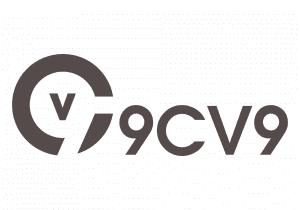



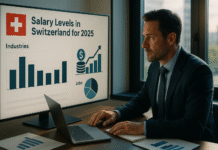




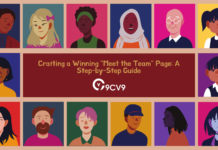

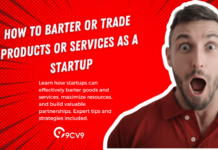
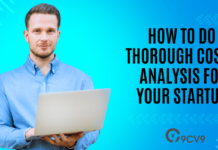


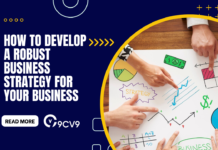
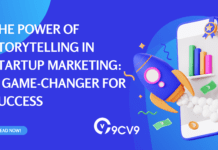

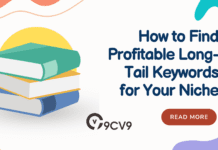


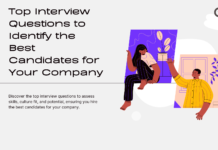



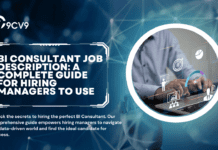


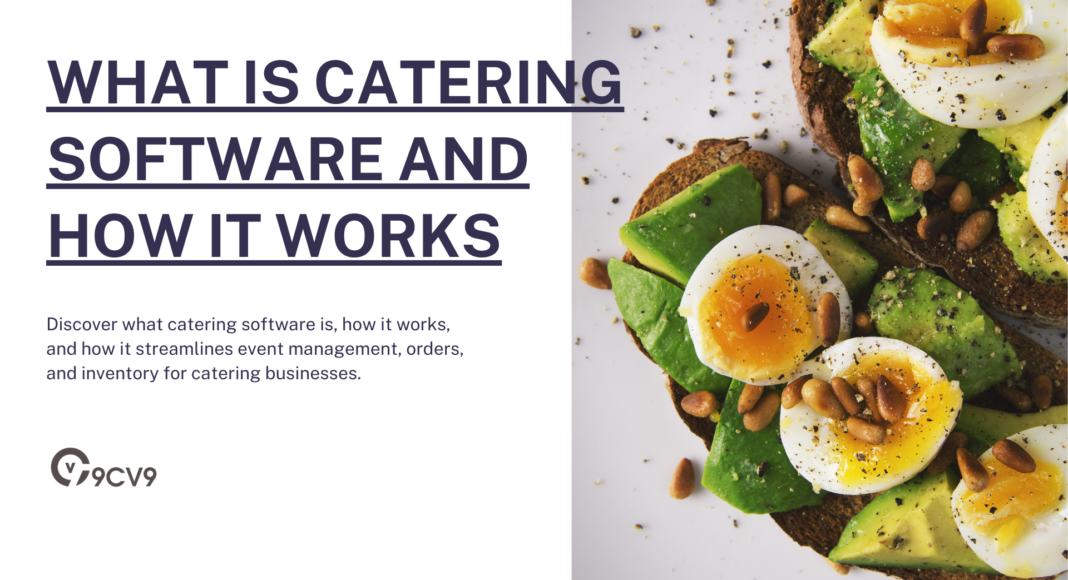


![Writing A Good CV [6 Tips To Improve Your CV] 6 Tips To Improve Your CV](https://blog.9cv9.com/wp-content/uploads/2020/06/2020-06-02-2-100x70.png)


